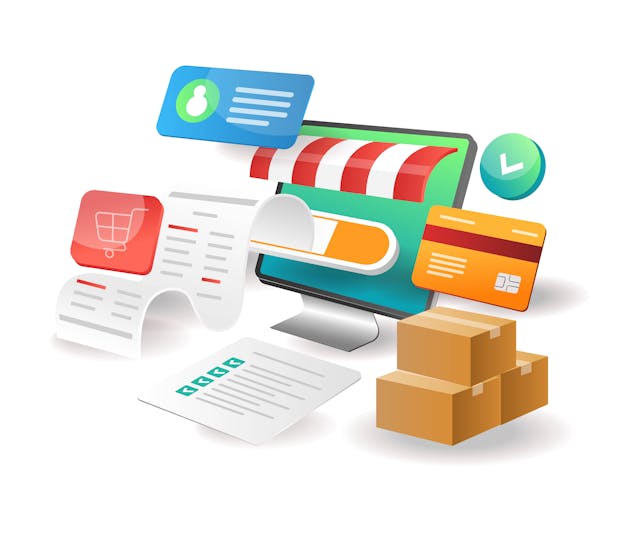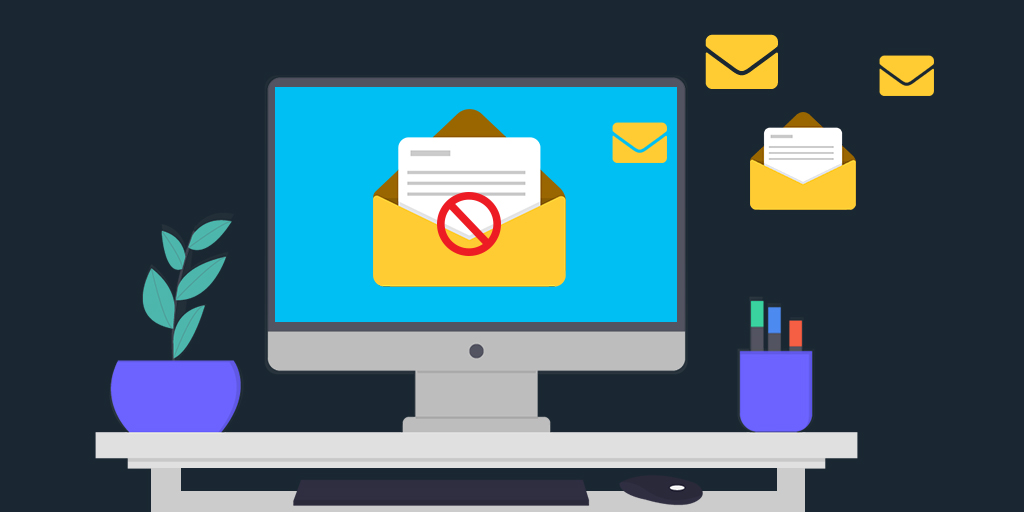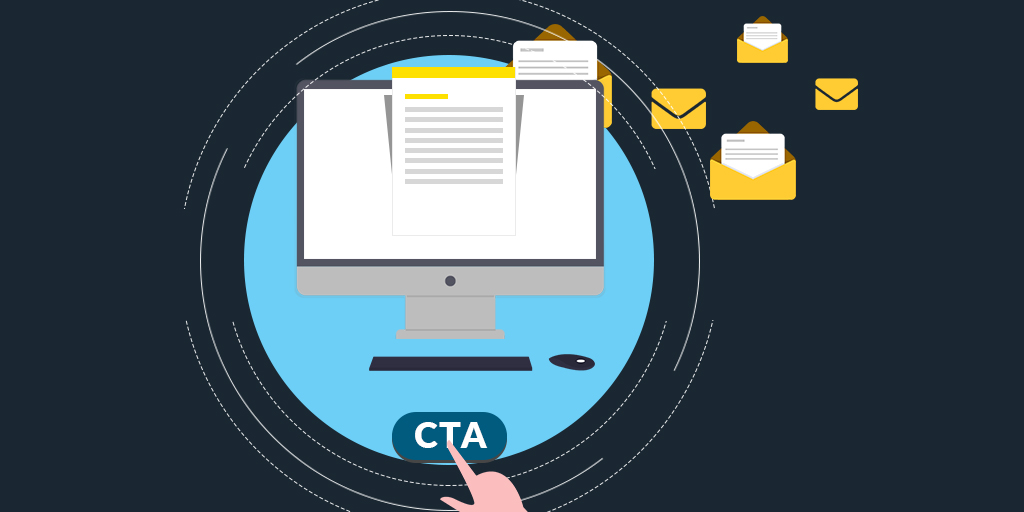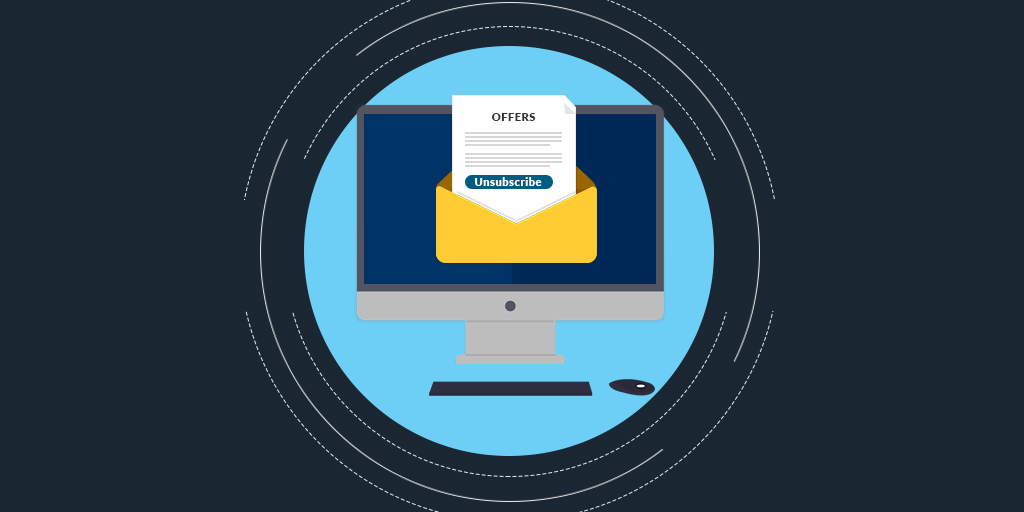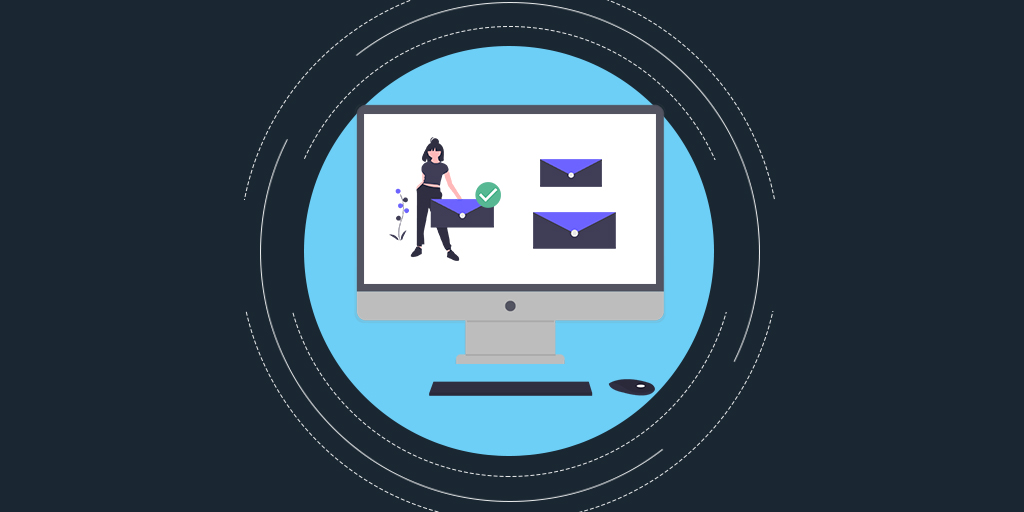16 Email Marketing best practices to improve your campaigns
Email marketing is used since shortly after the introduction of the internet to the world but it is still the king of all digital channels. It has the highest ROI of all marketing channels. In fact, email marketing has an ROI of 4400%. That is really huge, isn’t it?
Whether you are running a blog or selling products online, email marketing is very essential for every business’s marketing strategy.
In today’s digital world, marketers would like to connect with their audience in a highly personalized way with less budget. Email is a primary, perfect, and effective tool for communicating with your audience in a highly personalized way and email marketing is one of the best ways to increase conversion and generate leads.
Many marketers feel email marketing is very essential for their marketing strategy now than ever before. According to Statista, 333.2 billions of emails were sent and received each day in 2022 and the figure is expected to grow to over 392.5 billion daily emails in 2026.
Marketers feel it is a very effective tool for customer acquisition tactics and compared to other channels of advertising, email marketing is cheap as well. According to Oberlo, 81% of small businesses rely on email as their primary customer acquisition channel, and 80% for retention.
That’s why build successful email marketing is more important for every business to stay ahead of the race.
Okay then,
How do you make your email marketing more effective?
In this blog post, I would like to share some email marketing best practices that you need to know to improve your email marketing campaigns. I hope these tips will help you to increase your email open and click rates and also increases your subscriber’s lifetime value.
You can also refer to our previous blog post 9 step guide to effective Email marketing that will help you to understand what is email marketing and how does it work?
Email marketing best practices
- Don’t buy contact lists
- Use double opt-in for email signups
- Send welcome emails
- Clean your mailing list regularly
- Personalize your emails
- Write unique, compelling subject lines
- Keep your email copy short and simple
- Optimize your CTAs
- Use A/B testing
- Include unsubscribe options in emails
- Send emails at the right time
- Choose the right frequency
- Choose a dedicated IP address
- Tie your email to landing pages
- Make your email shareable
- Track and analyze your results
Don’t buy contact lists
Before buying email lists, ask one question yourself, Do you really like to receive unsolicited emails?
Probably the answer is “No”. Am I Right?
Even if you have well-written, high-quality information, your unknown subscriber/recipient doesn’t respond to those emails. They simply delete your emails and there is more chance to unsubscribe your emails or even mark your email as spam.
Buying email lists is a waste of time and money, it totally affects your reputation. So on the whole, buying email lists will kill your email marketing campaign.
Okay, what you can do instead of buying email lists?
You can build your own list instead of buying. There are multiple ways to build your email list.
- Create engaging, useful content and attract your audience to subscribe to your newsletter.
- Run a promotion or contest and ask your audience to share their email address to participate.
- Provide lead magnets – it is an incentive that you offer to your potential customer in exchange for their personal information like an email address.
- Use highly- visible opt-in forms on your website
- Promote email sign-ups on your website via your Facebook business page.
- Add social sharing options in your emails
Use double opt-in for email signups
We highly recommended that use a double opt-in method for email signups that will help to keep your email list clean. The key difference between a single opt-in and double opt-in is confirmation emails.
Single opt-in allows site visitors to subscribe via a subscription form without confirmation but double opt-in requires confirmation. It allows users to confirm the subscription via a personal email link, users need to click the link to activate the subscription.
Double opt-in improves the list quality, it ensures your subscribers are interested in your emails. It helps to reduce the unsubscribe rate and improve deliverability.
Double opt-in protects your email list from spambots or hackers because they don’t use real email addresses. so they can’t get confirmation emails. If you send an email to a spam address, you may suffer from deliverability issues or spam complaints.
Send Welcome emails
Do you know? 74% of new subscribers expect to receive a welcome email.
Welcome emails give the amazing opportunity to build a relationship with your audience and research has shown that welcome emails have the highest open rates and click-through rates than other email types. In fact, Welcome emails get 86% higher open rates than other emails.
Welcome emails are an excellent opportunity to introduce your brand and your products. By sending welcome emails, you can also increase the credibility of your brand.
Make sure to send welcome emails to new subscribers within 24 hours.
Best practices to write welcome emails
- Thank your customers for signing up and add popular words like welcome, thank you, new and their name in the subject line.
- Tell your brand story – A welcome email is a perfect tool for storytelling.
- Tell your subscribers what to expect in the future
- Offer a discount or some gift
- Highlight the best customer reviews
- Create a clear Call To Action
- Introduce your products with eye-catching images
- Provide customer service contact information
- Ask your subscribers to follow you on social media
- Send a series of three welcome emails and it works better than a single welcome email.
Whether you are running a blog or selling products online, email marketing is an essential part of every business’s marketing strategy.
Clean your mailing list regularly
Keep your mailing list clean and updated will help to improve your email marketing results. If your open and click rates are lower than usual and if you are getting more spam complaints or more unsubscribers, you can understand that you need to clean your mailing list.
Find spammy email addresses and remove them from your email list and remove inactive subscribers regularly. There is no use in collecting inactive email lists that will only make your metrics inaccurate.
A bad email list will affect your email deliverability and sending email to those email addresses will lead to spam or ISP block issues.
Cleaning your mailing list will reduce your email marketing cost and increase your ROI. It increases deliverability and it will also increase your open rates and click-through rates.
Personalize your emails
Personalization plays a vital role in your campaign success and studies proved that personalized emails have higher open rates. According to Experian, personalized promotional emails have 29% higher unique open rates and 41% higher unique click-through rates.
Personalize emails works better, it allows marketers to reach a specific audience. If you send the right message to the right person at the right time, you can increase conversion. It will also help you to create a strong personal connection with your subscribers.
Segment your email list for better personalization and you can create a segmented list based on location, demographics, psychographics, and search history.
Tips to personalize your emails
- Write as like you are talking to a person
- Use the recipient's name in your emails that will help to create a personal relationship with your subscribers
- Make sure that your message reaches them at the right time.
- Celebrate the milestones like birthdays, anniversaries, and other important dates.
- Provide tips to use the products they purchased that will increase brand loyalty.
- Link to the relevant content on your webpage
- Keep track their purchasing history and provide personalized product recommendations.
Write unique, compelling subject lines
The subject line is very important than everything and it can directly impact the open rate of your emails. In fact, 35% of email recipients open an email based on a subject line alone. So your subject line should grab your subscriber’s attention and it should convince your subscribers to open your email.
Keep your subject line short & sweet and keep it should not more than 50 characters long. Use the recipient's name in your subject lines and use a familiar sender name as well. If you like to use emojis in your subject line use them carefully because different operating systems provide a different version of emojis.
Use words like “limited time offer”, “order today”, “exclusive offer for you” will help to encourage your subscribers to open the email and remember that don’t use spam trigger words like “investment”, “junk”, “last chance” in your email subject lines.
Create a clear and attention-grabbing, value proposition subject line that matches the content of your email. Don’t use all caps and don’t overuse exclamation points as well.
Keep your email copy short and simple
These days, nobody has the time to read too long, too wordy emails. So it is necessary to keep your email copy short, direct & concise.
Your email copy should grab your reader’s attention at a first glance and it should convince them to keep reading your email. Use powerful words in your emails and use simple language as well that will make your email more readable.
Break up your email copy with lots of white space, bulleted points, and short paragraphs because the huge blocks of text will send your readers away from your email. Keep your paragraphs 2–3 sentences maximum.
Write as like talk to the person directly and make sure that the content is relevant. As I mentioned above, break your subscriber's list into segments based on location, demographics, shopping habits, and searching history for better personalization.
Don’t focus too much on the features of your products/services instead of telling them the benefits of your products or services. Include relevant, eye-catching visuals in your copy, and make sure that the visuals add value to your messages. Remember, don’t use too many images in your copy because that may distract your subscribers from your CTA.
Optimize your CTAs
Call–to–action button is mandatory for any marketing campaigns because without a call-to-action you cannot convert your readers into customers. CTA is like an invitation to a user to take some desired action that you want them to do.
So your CTA should grab your reader’s attention and it should persuade them to take necessary action. Your CTA needs to be clear and direct, it should tell exactly, what you want your readers to do.
Your CTA should be visually appealing and it should grab your visitor’s attention at a glance. Use contrasting colors and action-oriented words on your CTA buttons that will help to make your CTA stand out from the email copy. Don’t clutter the space around the CTA button.
Create a sense of urgency and scarcity in your CTA is an effective way to boost your conversion.
Use A/B testing
If your open and click rates are not high as expected, it means that you need to improve your email format or you need to improve your content. So it is important that you need to test every part of your email before launch.
Use A/B or split test to find out which element works better on your email. A/B test is a method of comparing two versions of an email against each other to find out which can generate opens, clicks, and conversions.
You can test different elements of your email like CTAs, email layouts, subject lines, email contents, images, sending times, etc.
Remember, only test one element at a time, If you test two or more elements, you can’t get accurate data because with two elements you can not find out which one impacts your open and click rates. Make sure that you have a significant sample size for testing.
Include unsubscribe options in emails
Allow subscribers to unsubscribe and make it easy for them. According to the CAN-SPAM act, all the email newsletters should have an easy to follow instruction for unsubscribing.
Make the unsubscribe link noticeably and many brands include the unsubscribe link in the footer of the email but if you would like to make the unsubscribe process easy for your readers you can also include the link in the header of the email.
It should be available in one click and it should be instantaneous as well. Actually, it will help you to avoid a bad reputation. Ask your subscribers why they unsubscribed and use multiple choice questions for this. This data will help you to improve your email marketing campaign in the future.
Add a link to your social media channels on the unsubscribe landing page that will encourage your subscribers to stay in touch with your brand even while they opt-out from your email list.
Send emails at the right time
What is the best time to send an email? This is the one basic question every email marketer has. Timing is very important here because it directly impacts the open rates, click-through rates, and conversion as well.
Even if you have an excellent subject line and a great offer, you need to find the best time to send your emails to improve the open and click rates.
Experts recommended that the best day and best time to send your email is Tuesdays and Wednesdays around 10 – 11 AM. On the other hand, Mondays and weekends are the worst time to send emails.
But at the end of the day, every email marketing campaign is little different, Isn’t it?. Apart from those recommendations, you need to test the different times to know which time is best to send emails to your audience.
Remember it, the best time mainly depends upon the time zones where your audience located in.
Choose the right frequency
Send an email at the right frequency is extremely important for your email marketing success. Sending too many emails to your subscribers may irritate them and they may unsubscribe your emails. In fact, 69% of US email users unsubscribe from a business because the organization sends too many emails.
On the other hand, if you send emails in a low frequency your subscribers may forget about you and that will decrease brand awareness and sales opportunities. So it is highly important to find out the right frequency to send emails.
To find out the optimal frequency, you need to monitor some metrics such as open rates, click rates, conversions, complaints, and unsubscribes. Or else allow your subscribers to choose the frequency.
Let them decide how often they want to hear from you. Offer some frequency options in your subscription form to your subscribers like weekly, monthly, 2-3 emails a week, and new arrivals.
This frequency option also works well at the point of unsubscribing. There you can offer your subscribers to reduce the frequency or allow them to choose email types that they want to see in their inboxes.
Choose a dedicated IP address
Many email marketing tools allow you to select between shared IP and dedicated IP address to send your emails. But what is the difference between shared IP and dedicated IP?
Shared IP – A shared IP id used by more than one sender. In shared IP there is no reputation control which means your email deliverability totally depends on others email deliverability scores.
Dedicated IP – A dedicated IP is used by a single sender. Here your reputation is not determined by others because in dedicated IP you have the full control of deliverability of your emails.
If you consistently send a high volume of emails in a month, you need to use the dedicated IP address to send your emails. Perhaps, you are sending 100,000 emails per week definitely you need a dedicated IP address. But if you think shared IP is best for you, you need to analyze the IP pool you are in and analyze how your email service provider group their users.
Tie your email to landing pages
Make sure that your landing page is matched with your email. If it is not like that, your email subscriber may confused, they probably think that your email is a scam, and finally, they leave your website immediately and decide that not to visit again.
To make your email and landing page look like same, use the same aesthetic styles such as colors, fonts, designs, content, and logo on both. If you mention any offer in the email, make sure to mention on the landing page too.
Actually, match your email to the landing page will help to build trust among your subscribers with your brand.
Make your email shareable
If your email template doesn’t have social share buttons at the bottom, now it is the time to incorporate it.
Include social share buttons at the bottom of your email is a great way to reach a wider audience. If your subscribers feel your email content is useful to them, they would like to share with their friends.
Include social share buttons on your email is actually a second call-to-action. Include a white space around the button and make sure that the buttons are easily tapped by the mobile.
Don’t overload your email with too many social share options, choose social share buttons depends upon nature of the content and your audience.
Track and Analyze your results
Measure and analyze the results is very important for every marketing campaign.
Email marketing metrics like open rates, click rates, bounce rates, conversion rates, and unsubscribe rates will help you to understand the performance of your emails, and you can understand how your audience is engaging well with your emails.
- Open rate = ( Total number of opened emails / Number of emails sent ) * 100
- Click – through rate = ( Total clicks / Number of delivered emails ) * 100
- Conversion rate = ( Number of recipients who complete the desired action / Number of delivered emails ) * 100
- Unsubscribe rate = ( Number of Unsubscribes / Number of delivered emails) * 100
- Bounce rate = ( Total number of bounced emails / Number of emails sent ) * 100
- Forward / share rate = ( Total forwards / Number of emails sent ) * 100
With the help of the metrics report, you can continuously improve your email marketing strategy.
Conclusion
Now, you know very well the proven and recommended email marketing best practices. I hope this guide will help you to create a successful email marketing campaign.

Rajanarthagi
Content writer and Marketer
An enthusiastic SEO expert, passion for digital marketing with two years of expertise in writing Digital Marketing and SEO content. She is a Master of Business Administration graduate from a reputed university in south India. Her passion for SEO and online marketing helps her to stay up to date with the trends and strategies. Follow her on social media sites, to stay up to date with SEO, and Digital Marketing, Updates. To contact Raji, visit the contact page.

